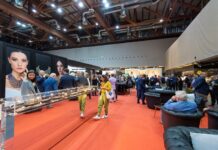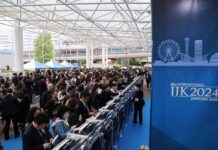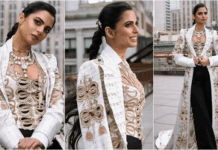As smartphone touch payments are beginning to replace credit cards, and shopping from an iPad gets easier and easier, there is no doubt that the industry is experiencing a digital retail revolution.
However, while at first glance e-commerce seems to offer a low barrier of investment entry and limitless global opportunities, it also comes with its own unique set of challenges and problems, especially for companies operating in the UK jewellery industry.
After a decade as chief executive officer of The Diamond Store Gary Ingram debunks seven of the most common myths about running an online jewellery retail business.
Myth 1: An online jewellery business is cheap to run
Reality: E-commerce requires a much lower investment to begin with, compared to a bricks-and-mortar store, but an online jewellery business has costs that aren’t always obvious. “It’s not enough to just factor in IT, web design, stocking, logistics, tech equipment, data protection — and the payroll of the team to do all that,” shares Ingram, adding: “Online marketing is also fiercely competitive. To give you an example, 10 years ago the Google AdWords term ‘sapphire ring’ used to cost us 22p per click, now it’s £1. Another thing is that today’s online customer expects 24-hour delivery and free returns. Last year our postage bill alone exceeded £100,000.”
Myth 2: Physical jewellery shops will soon become a thing of the past
Reality: It is true that online retail has disrupted the traditional way people shop, but statistics show that the vast majority of consumers still prefer to buy jewellery from a physical store. Furthermore, the 2016 PwC Total Retail Survey found that when it comes to purchasing jewellery and watches, 50% of consumers said they’d rather do it in-store, and only 30% would go online. According to the Euromonitor International 2016 report on jewellery retail in the UK, Britain’s jewellery industry is still primarily local.
Myth 3: All a business needs is a good website
Reality: Setting up an ecommerce website is the easy part; driving customers to it is the challenge. “Establishing an online store is the real life equivalent of opening a shop in the smallest, darkest, hardest-to-find alleyway,” Ingram explains. “No one will find your website unless you invest heavily in AdWords, retargeting, content marketing, social media advertising, and traditional PR.”
Myth 4: Social media is ‘just for kids’
Reality: Social media is not just an added bonus, but a necessity for online jewellery brands. Ingram comments: “A physical shop location builds trust, and live customer service builds rapport. In a similar way public opinion posted on social media can make or break an e-tailer. Facebook, Twitter and Instagram aren’t just sales channels, we need to use them to build a personal relationship with our customers.” The PwC report confirms this, stating that while 59% of consumers go on social media channels to research, follow and express their opinions about brands, only 12% are using them to shop. “A multi-channel strategy that includes mailing, content marketing and social media has huge advantages,” shares Ingram, adding: “But you need to take the time to analyse how your customers are using these channels. Our social media strategy at TheDiamondStore.co.uk recognises the value of interacting with our customers directly and on a very personal basis, while at the same time offering them a smooth retail experience on our website.”
Myth 5: Setting up an online store will take away from your brand’s offline sales
Reality: Today, all the big jewellery brands have an online presence. At first glance it may seem like internal competition, with online robbing profits from traditional offline. But an expansion to online sales is a de facto opportunity to reach a bigger audience. It also means that customers have multiple ways to buy a brand’s products. Jo Caudron and Dado Van Peteghem wrote in their book, Digital Transformation: A Model to Master Digital Disruption, ‘The trick will be in understanding which digital drivers impact your traditional models the most and using these forces to create your own alternatives. Do not wait until a startup disturbs or even destroys your value. Challenge your business rules yourself and create your own (internal) competition.’
Myth 6: A web store makes you money while you sleep
Reality: Yes and no. It is true that an online jewellery store is open day and night, and while you sleep the orders keep coming in. But you may also be experiencing technical hiccups, having items running out of stock or receiving complaints, and those issues will be there waiting to be resolved the minute you step into the office— just like in any traditional bricks-and-mortar business. Ingram highlights: “You have to think carefully about how you’re going to manage that 24-hour shopping cycle. It’s not always easy.”
Myth 7: Window shoppers go to the web for the lowest prices
Reality: A common myth about online shopping is that the vast majority of people window shop only to go and buy the item cheaper online. In reality, this is not the case. The PwC report found that showrooming (looking at product in shops, but buying them online) had a 32% sales conversion rate, while webrooming (researching products online, but buying them in a shop) had a 30% conversion — making the current playing field fairly equal for online and bricks-and-mortar.
As we live in a time where baby boomers and Generation X are still the biggest spenders, but the millennials are definitely coming, Ingram shares this final thought: “How do we cater to the vastly different demands and expectations of jewellery consumers in 2017? Ultimately, it boils down to this: whether you operate your jewellery retail business online, offline or omni-channel, you must offer a seamless, reassuring and individualised shopping experience. Good, old fashioned customer service is still the one thing that no jeweller can survive without.”
News Source: professionaljeweller.com
Disclaimer: This information has been collected through secondary research and TJM Media Pvt Ltd. is not responsible for any errors in the same.




























